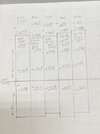longdayjake
Member
If the reality is there is that much variation in chamber size in these pistols, then as far as I can see, the above is the consensus. There really cannot be a recommended seating depth. So the advice has to default back to proces outlined in the link NMexJim gave post #2. You have to determine max OAL for your particular barrel and go from there.
If Sierra and Hornady made the call to seat bullets deep enough to chamber in most pistols, including those with very short chambers, then that explains why Sierra has a seating depth of 1.030 for their 125 gr JHP. But even if we or me did the same, that gives us a starting place when it comes to load data for the powders.
The semi-related question then becomes why some gun makers have such shallow chambers? In the link, it was mentioned how accurate those pistols are. Perhaps they get something from a short jump? OTOH, have seen where dedicated target pistols have deep chambers, which would suggest long jumps to the lands.
From a very high altitude, I'm seeing similarities between chambers in 9mm and 308 win.
So, it all started with a marketing ploy. Some idiot somewhere decided that they could save money on throat reamers if they just didn't buy them. Then. to avoid any customer backlash they decided to market those barrels as MATCH barrels. Near as I can tell it started with the Springfield Armory XD with shorter throats but I guess it worked so well that other manufacturers doubled down on the stupid and went to almost nothing at all. A shorter throat means nothing for accuracy in pistols. I've got a few 2011s that I load 9mm stupid long for and I had to buy a throat reamer to get the throat long enough to handle my ammo. That barrel is a KKM and it will shoot a one hole group at 100 yards with ammo loaded even to minimum spec. Barrel quality is what makes a pistol barrel accurate. Not throat depth. The short throat thing is mostly a foreign barrel maker thing. Glock (gen 5 only), CZ, Canik, and a few others. I haven't tested them all but those ones I know for sure have almost no throat.


